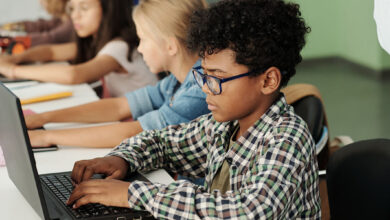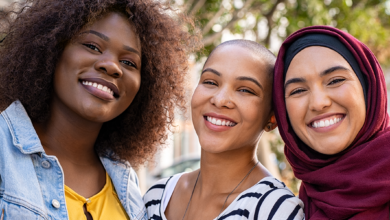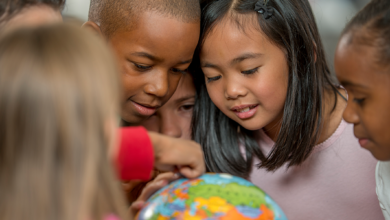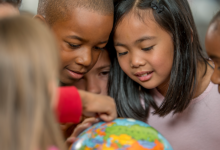
by Audrienne Roberts Womack
There is no doubt that we have had countless discussions about bullies in all aspects of life and for many, a lot of that dialogue has been quite opinionated, emotional, and highly charged. Our children have witnessed many of those conversations and have formed favorable or often unfavorable impressions of the actions of bullies as a result of those exchanges. According to Merriam-Webster a bully is “one who is habitually cruel, insulting, or threatening to others who are weaker, smaller, or in some way vulnerable.” When discussing the whole phenomenon of bullying, it would be helpful, to begin with, the definition, then study it and ultimately discuss it, so that the child can better understand the intentions or characteristics of a bully.
It is extremely necessary to have ongoing heartfelt conversations with our children about their actions and the actions of others. In some cases, we may even find out that the child may admit to being a bully, even if it was towards a sibling or in the form of casual teasing that could have gone too far. If this is the case, we need to have a specific conversation about that. It is even realistic to inform our children that adults can be bullies as well as their peers. More and more children are witnessing “teacher bullies”, “neighbor bullies” and random adult bullies that can live in their communities. Concerning teacher bullying a psychiatrist who directs the Peaceful Schools and Communities Project at the Menninger Clinic in Houston named Stuart Twemlow, MD, feels teacher bullying gets little attention. He refers to a new study that was published in The International Journal of Social Psychiatry and mentions that the problem could be way more common than many people may have realized before. So in knowing this, we can not rule out that this is not occurring.
In an article in an online magazine (Grow by WebMD), titled, Teachers Who Bully, Dr. Twemlow goes on to describe teacher bullying as “using power to punish, manipulate, or disparage a student beyond what would be a reasonable disciplinary procedure.” He also goes on to inform us that the majority of teachers are “committed and altruistic” and in most cases go beyond the call of duty willingly and professionally. Dr. Twemlow suggests keeping this in mind when talking about teachers that may bully children, so we don’t make assumptions about all teachers. We should continue to have honest conversations that reassure children that adults are not always right and that every grownup may not have their best interests in mind, which can be quite informative. This may be a harsh reality to share with our children, but it is genuine and accurate. This realism doesn’t just apply to teachers but can include health professionals, law enforcement, and all others that children may encounter in their lives who are in their immediate and not so immediate environments.
When talking to children about this we have to always take into consideration the age, maturity, and emotional competence of our children when discussing sensitive topics such as this and monitor their reactions throughout the discourse. Also, daily our children are frequently on their devices, such as computers, laptops, and phones. By interacting with these devices, they are often face-to-face with more rhetoric, misinformation, and propaganda than we can adequately monitor and decipher for them. A spokesperson for the Office of the eSafety Commissioner informs parents: “When it comes to our kids being exposed to disturbing or inappropriate content online, unfortunately, it’s not a matter of ‘if’ but ‘when’.”
So as much as we can, we should also take the time to talk about the images they are viewing and discuss how those images may resonate with them. Sharing open-ended questions about what they are seeing and how it makes them feel can help to uncover what they perceive of the situation. Martine Oglethorpe, online safety expert and founder of the digital well-being website, The Moon Parent, advises us to tell our children upfront that they are likely to come across websites that may be uncomfortable or inappropriate and one’s that they may feel are possibly not made for children. Reassure them that if they see something that concerns or upsets them, that you want them to let you know immediately, so you can talk about the website and how it made them feel.
When discussing bullies with our children one of the major benefits and teachable skills we can use is in observing, critiquing, and exploring various “behaviors” we have witnessed in them. We can use this opportunity to look at the behavior objectively and create earnest discussions with a focus on the ongoing problematic behaviors that are observed. By focusing on the behaviors we can use them to empower our children in such a way that they will hopefully not manifest those behaviors in their own lives. Some of those behaviors that can be shared and considered can be centered around the differences between speaking up authentically versus gossiping, name-calling, and being a tormentor versus defending yourself as a way to stand up for injustice. Other behaviors that can be examined can include constantly blaming others versus taking responsibility for our own mistakes and continuously criticizing others and treating them with indignity versus treating all people with respect, compassion, and appreciation.
However, according to the National Education Association (NEA) “It is important not to misuse the term bullying for every behavior problem. Identifying what behavior is (and labeling the behavior, not the student) helps us to select the most appropriate intervention strategies.” It’s imperative that when dealing with bullying behaviors we indeed label the behavior and not the student. Unfortunately, all too often we do the opposite and label the child who is bullying, which only escalates the situation with added adversity, instead of trying to make it better for all involved.
The best time to get our children’s attention is when their devices are off and there are little to no distractions around them. It’s important to get their undivided attention and allow them to participate in the conversation freely, openly, and honestly. The conversation doesn’t have to focus on any specific child or person that they know, but if it does, and children have specific concerns, make sure you incorporate open-ended questions that consist of providing advice, next steps or solutions the child can think of, that the bully could have utilized, but in most cases failed to do so. Have children brainstorm ways in which they could have rectified the situation, something they could have done differently, or strategies they could have used to achieve their goals. Have children brainstorm possible scenarios or outcomes that could have been used to come up with better solutions or more favorable outcomes. Children can also use examples from their own lives and examples around them.
In discussing the bully’s problematic behaviors, the focus can just be on the behaviors themselves, using examples and effective alternatives that could better achieve desired and acceptable outcomes. This should be the ultimate focal point and point of discussion. As previously mentioned, using specific names of the bully or bullies is not necessary during the conversation and may even be a distraction to the overall intention of the discussion. The main objective should be on identifying and examining unsettling behaviors and coming up with strategies and next steps in conquering them. Some topics and behaviors that can be targeted are:
- Words Matter
- How We Treat People Matter
- Telling the Truth Matters
- Obeying Rules and Authority Matters
- Taking Responsibility For Our Actions Matters
Words can be used for healing and words can be used to hurt and devastate. Knowing how to use words is necessary when trying to get understood and acknowledged by others. What also goes hand in hand with the worlds we use, is the tone, facial expressions, and body language that we used to get those words across. How we speak about ourselves and how we speak about others also sends messages that help to define who we are and how we relate with others. When using words, we also have to keep in mind that once words are spoken we can not take them back. No matter how many times we apologize or how many times we try to re-frame what has been said, the sting from the original statement will always resonate with the receiver and the feelings established will forever be firmly fixed in their memory. According to Katie Zimmerman, Project Coordinator for The Kim Foundation, in her article, Our Words Matter, she points out that, “Another reason why our words are so important is that they can begin to shape how an individual views themselves. Whether or not it is done consciously, people will begin to believe they are only the labels other people put on them.” When talking to our children about the importance of words and how we use them with others, let’s be sure to remind them of the consequences of the choices we make and as much as possible to think before speaking and doing it in such a way that it empowers others and not demoralize them as an act of revenge or scorn.
Treating others in the way we want to be treated sounds easy enough to comprehend but all too often we can justify our actions, based on how we interpret the other person’s actions towards us. If we think they did something to offend us, then we are going to do something right back at them in the same manner, to let them see how it feels. If they looked at us wrong, then we are going to stare right back at them in the same way. In cases like these, we find ourselves more reactive rather than thinking reasonably and intelligently. Treating others with respect and high regard takes empathy and patience. Being able to understand and share the feelings of others comes with practice. It also comes with being able to tolerate the differences in others without getting upset or angry because of those distinctions. When treating others with empathy and respect, also defines who we are as individuals. We are the mirrors of our lives. Everything that is within us is reflected on the outside and often many of our relationships with others, unfortunately, reflects how we feel about ourselves on the inside.
At an early age, parents have always stressed the importance of ‘telling the truth.’ Some old school television shows would even display angry parents threatening to wash their children’s mouths out with soap if they didn’t tell the truth. Some young children would even cross their fingers when telling an untruth as if by crossing their fingers they would be protected from the lie. Many of us grew up listening to the story of ‘Honest Abe’ and how Abraham Lincoln was always trustworthy. It is said that Lincoln believed in his integrity and prided himself on being a decent and fair lawyer and politician. It was commendable that Abraham Lincoln had such virtues that were respected by those around him. Furthermore, children must learn early to tell the truth and to honor what they say. They should understand the negative consequences that come from lying and misrepresenting the truth. This would also be a great opportunity to use real-life examples and to create scenarios that can be examined and discussed, while also talking about why the truth was possibly excluded in the first place.
Another quality that we should emphasize is obeying rules and authority. Obeying rules and obeying authority is something that we have to take time to ponder with our children. We want children to be mindful and respectful of both rules and authority but at the same time, we want them to also be in a position to ask questions when they feel something may not be in their best interest. Even in doing this, it can be done with tact and decorum so that the overall message is getting across without contempt or animosity. Children learn at an early age that they have to obey rules and most understand that rules help us to recognize what is expected of us and what will happen if we disobey them. Children can learn early on that rules can make us feel safe and protect us from abuses by other people, organizations, and even the government.
According to the Centers for Disease Control and Prevention, “Consistently follow through with consequences when rules are broken and help your child have a clear understanding about the importance of rules. Remember, young kids sometimes break rules because they simply forget. Not all broken rules occur because kids are testing the limits. But, our responses should be the same no matter what the reason for breaking the rule.” So by being aware of our responses can also have a big impact on the messaging we are trying to present to our children as well. This too will take patience and practice on our part.
When discussing rules, it’s also important to emphasize that when there are no rules, life would be chaotic and out of order with confusion and unacceptable behavior. Rules not only help set the tone, but they also help us in working toward common goals. The same idea applies to obeying authority. Once it is established who is legitimately in charge, respecting them and following their lead can be done concerning either their position and our respect for their position, knowledge, and leadership. Children can learn to obey rules and authority by coming up with rules of their own and identifying the purpose and significance. Children don’t have a problem perceiving people in charge as role models and assets to the people and organization they represent.
Another significant discussion we can have with our children is on taking responsibility and ownership of our actions. Nathaniel Branden, “the father of the self-esteem movement”, advises us, “Taking on responsibilities that properly belong to someone else means behaving irresponsibly toward yourself. You need to know where you end and someone else begins. You need to understand boundaries. You need to know what is and is not up to you, what is and is not in your control, what is and is not your responsibility”. This ongoing conversation means refraining from blaming others for what we are responsible for and recognizing our faults and learning from them. It also means to accept and recognize that we are in control of what’s going on in our lives, and we have the power to change and grow at any time.
We must help children to complain less and change their perspectives if they have to and learn to appreciate multiple solutions. Children can also come to understand that there are different ways to handle different situations and multiple ways to resolve obstacles when faced with challenges. Most of all, it’s imperative that we assure children that it is not a sign of weakness to own up to our mistakes. Owning up to a mistake has huge benefits in the long run, and It can unmistakably prevent the problem from escalating and then becoming so big it will be difficult to solve. Owning up to our actions whether they are good or bad results in learning and growing from both our triumphs and mistakes and using those lessons in becoming a better person.
The problematic behaviors that have been described here have been behaviors that have been identified as inflammatory behaviors that we have seen displayed by many bullies daily for many children. Behaviors that we can use to ensure that our children are not emulating or practicing on a regular or deliberate basis. As we analyze these behaviors we can form rich conversations about them. We can then discuss why these behaviors are not acceptable and not suitable for individuals that are trying to bring value and humanity to their environments and the world. These conversations should continue routinely and valuable time should not be spent criticizing and bashing any specific individuals. However, we can learn from the negative conduct in question and vow that our children will be positive examples of refined and civil members of the community. Individuals with personal standards and ethics will prevail. With patience and respect, it is with great expectancy that this will result in actions where treating each other with decency and empathy will be automatic.










